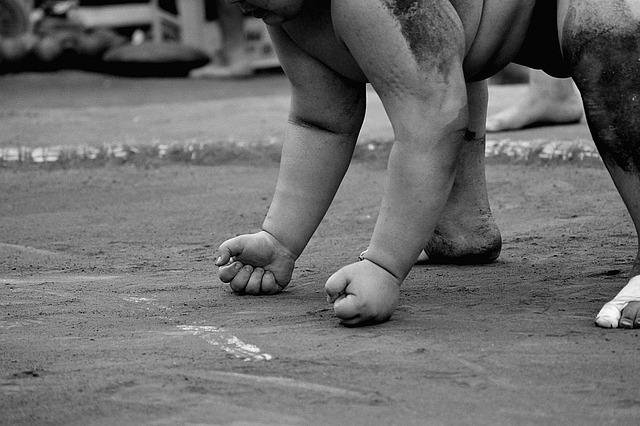In an unprecedented move responding to a rising public safety concern, Japan has deployed troops to address a sudden surge in bear attacks across several rural regions. As local authorities grapple with increasing wildlife encounters that threaten communities, the government’s decision to involve military personnel underscores the severity of the situation. This development marks a significant escalation in the country’s efforts to manage human-wildlife conflict, raising questions about the underlying causes and the effectiveness of conventional measures.
Japan Mobilizes Military Forces Amid Rising Bear Attack Incidents
Amid a sharp increase in bear-related incidents across rural Japan, authorities have taken the unprecedented step of deploying military forces to assist in containment and rescue operations. The surge in attacks, attributed to expanding bear populations and habitat encroachment, has raised public safety concerns in prefectures like Akita, Nagano, and Hokkaido. Troops equipped with non-lethal deterrents, tracking technology, and surveillance drones are working in coordination with wildlife experts to locate and manage the bears while minimizing harm to both humans and animals.
The government’s response includes several key strategies aimed at curbing the escalation:
- Enhanced patrolling of forested areas prone to bear activity
- Community awareness campaigns to educate residents on prevention and safety
- Rapid response teams stationed for emergency evacuation assistance
Experts caution that environmental factors such as climate change and deforestation have contributed to shifts in bear behavior. The military’s involvement marks a significant pivot in Japan’s approach to wildlife management, underscoring the urgency to protect both the populace and the natural ecosystem.
| Prefecture | Bear Incidents (Last 6 Months) | Military Units Deployed |
|---|---|---|
| Akita | 47 | 2 Infantry Squads |
| Nagano | 35 | 1 Recon Unit |
| Hokkaido | 62 | 3 Infantry Squads |
Analyzing the Causes Behind the Surge in Bear Encounters Across Rural Regions
Multiple factors are contributing to the unprecedented spike in bear encounters throughout rural Japan. Primarily, the expansion of human settlements and farmland into traditional bear habitats has led to increased proximity between humans and wildlife. This encroachment disrupts natural bear migration patterns and foraging behaviors, often forcing bears into villages in search of food. Additionally, milder winters linked to climate change have resulted in reduced hibernation periods, prolonging bears’ active seasons and heightening the likelihood of conflict.
Another critical issue involves the scarcity of natural food sources. Deforestation and poor acorn harvests have depleted bears’ usual diets, driving them toward human refuse and crops. The government’s data outlines these causes alongside regional attack statistics:
| Factor | Impact Level | Regions Most Affected |
|---|---|---|
| Habitat Encroachment | High | Hokkaido, Tohoku |
| Climate Change | Moderate | Central Japan |
| Food Scarcity | High | Kyushu, Chugoku |
Experts emphasize the following measures to mitigate these conflicts:
- Enhancing community awareness and bear-proofing techniques
- Increasing conservation efforts to restore bear habitats
- Implementing controlled deterrence and monitoring programs
Experts Advise Enhanced Community Safety Measures and Wildlife Management Strategies
Community safety experts are urging local governments to adopt a multi-faceted approach to address the recent increase in bear encounters. Strategies recommended include enhancing public awareness campaigns focused on safe outdoor practices, installing bear-proof waste containers, and implementing controlled access to high-risk areas during peak bear activity periods. Officials emphasize the importance of collaboration between residents, wildlife agencies, and law enforcement to create a unified front in minimizing dangerous interactions.
Wildlife management specialists highlight several key interventions designed to balance human safety with ecological preservation:
- Habitat restoration to reduce bears’ attraction to urban environments
- Use of deterrents and non-lethal methods to discourage bears from approaching populated zones
- Enhanced tracking and monitoring systems to anticipate bear movements and notify communities promptly
| Measure | Purpose | Expected Impact |
|---|---|---|
| Bear-Proof Containers | Limit food access | Reduce urban foraging |
| Community Workshops | Educate residents | Increase safety awareness |
| Controlled Access Zones | Manage human presence | Lower encounter risk |
The Conclusion
As Japan confronts an unprecedented surge in bear attacks, the government’s deployment of troops marks a significant escalation in efforts to protect rural communities and restore public safety. This development highlights the growing challenges of human-wildlife coexistence amid expanding animal habitats and changing environmental conditions. Authorities face a delicate balance between safeguarding citizens and preserving the country’s natural ecosystems, underscoring the complexity of managing increasingly frequent wildlife encounters in modern Japan.




